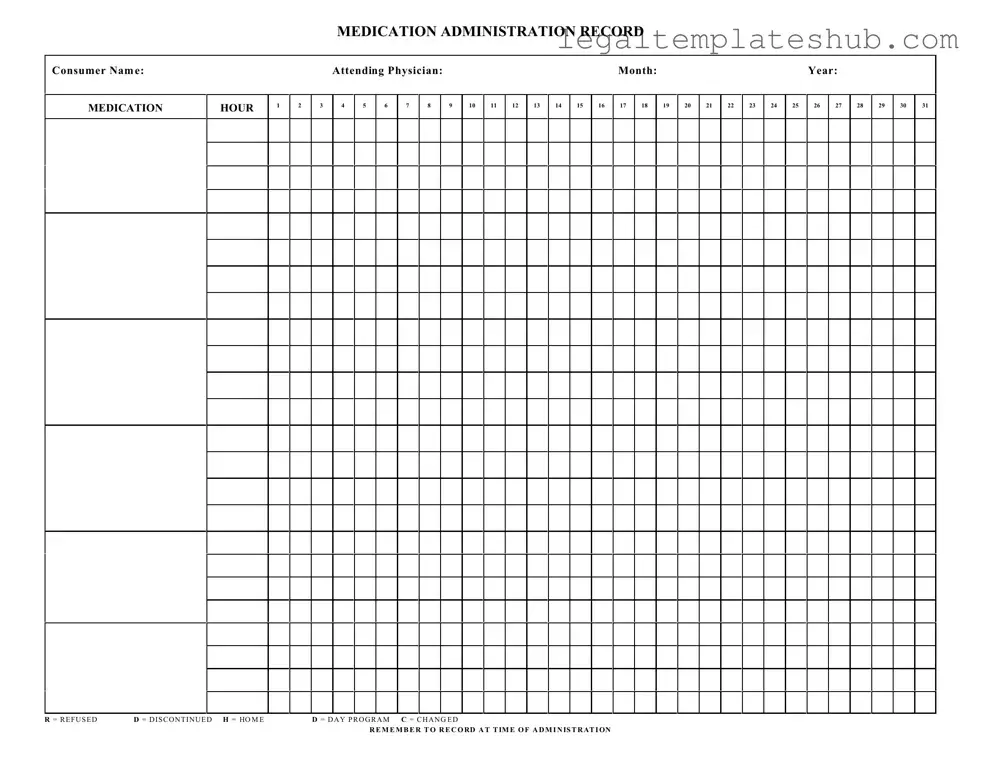Blank Medication Administration Record Sheet PDF Form
The Medication Administration Record Sheet is a crucial document used to track the administration of medications to patients. This form helps ensure accurate record-keeping and compliance with medical protocols. It is essential to fill out the form correctly and promptly; click the button below to get started.
Access Editor
